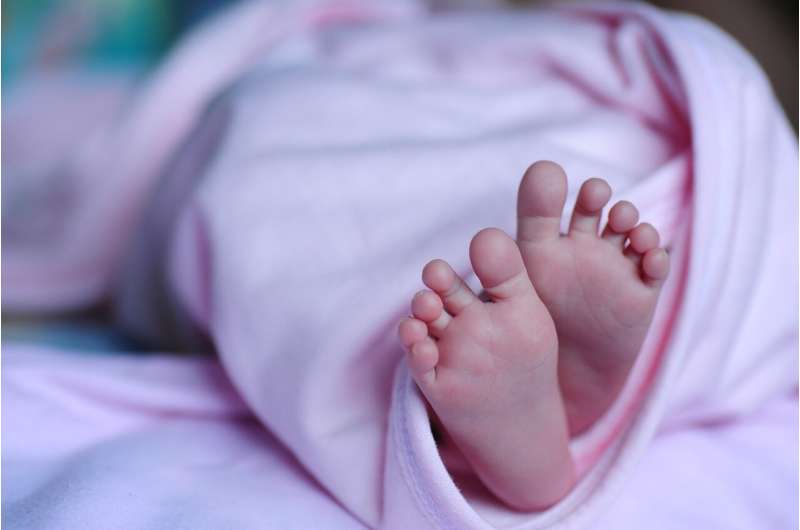'Call the Midwife' has translated from the screen into real life

"Call the Midwife" is one of the most loved shows on television, regularly watched by a global audience of 11 million, and if the latest evidence from South Australia is any guide, increasing numbers of pregnant women are now heeding the call.
The highly successful British series is set in the 1950s, but a new paper released this month by UniSA researchers shows how midwifery is helping to shape 21st century healthcare in our own state.
Almost 20 percent of women in South Australia now receive antenatal care through publicly-funded midwifery-led services and 15 percent of women in SA give birth entirely through midwifery care.
According to Pam Adelson, lead author of a UniSA study documenting two decades of midwifery-led care in SA, the preference for midwives has more than doubled since 1998 when birth centers (BC) were first established in South Australia.
It's a big thumbs up for midwives and while the three existing birth centers in Adelaide can't meet the growing demand with just 10 beds, all women are able to receive midwifery-led care throughout their pregnancy, birth and afterwards.
"Six percent of South Australian women give birth each year in one of the three midwifery-led birth centers in SA," Adelson says. "Even though this is higher than the national average (2 percent), more women could opt for midwifery-led births if we adopted national recommendations to provide additional birth centers."
While the overall number of BC births has not increased, women seeking midwifery-led care throughout their pregnancy continues to grow.
The preference for midwives crosses all cultures, the study finds, with women from non-English speaking backgrounds just as likely to choose a birth center as Australian-born women.
Adelson, who is based at UniSA's Rosemary Bryant AO Research Center, says the benefits of midwifery-led care are widely recognized, with multiple studies reporting higher maternal satisfaction, with lower costs to health services and fewer interventions. There are also no significant differences in adverse outcomes compared to conventional births in labor wards.
"Obstetricians work collaboratively with midwives and are needed for pregnant women who have complex health needs, however for the majority of healthy women, professionally-educated midwives offer a highly valued service," she says.
"This has been especially true during the COVID-19 pandemic, which saw the cancelation of antenatal classes and restrictions to hospital clinic visits, leaving many women feeling vulnerable. Having a known midwife providing continuity of care throughout the pregnancy, birth, and afterwards, has provided a lot of reassurance to women using this service in recent months," Adelson says.
The researchers used 19 years of SA Health perinatal collection data and birth statistics in midwifery-led models of care to assess the trends and characteristics of women using these services.
Women opting for midwifery-led births in BC from 1998 to 2016 were younger than those birthing in conventional labor wards and less likely to be having their first birth.
Obstetric complications were reported for 12 percent of women birthing in BC compared with 35 percent of women birthing in conventional labor wards.
Most births in Australia (97 percent) still occur in hospitals in conventional labor ward settings, with only 2.4% of women giving birth in a midwifery-led BC or at home (0.38%).
"This proportion has remained static with approximately 2 percent of women giving birth in BC over the last 20 years in Australia. For many years, South Australia had the highest recorded proportion of BC births in the country at approximately 6 percent, although the ACT has surpassed that figure since 2014, with a comparable figure of 7-8 percent."
The researchers found that, on average, over the study period, 11 percent of women in South Australia intended to give birth at midwifery-led birth centers, although only 54 percent did so. The reasons included lack of available beds and complications during the course of their pregnancy.
"Nationally, the number of birth centers in Australia has decreased in the past two decades, despite women wanting more choice over their birth place. This goes against the trend in some other countries, such as the Netherlands and the United States, where birth centers are increasing. Hopefully Australia can follow suit," Adelson says.
More information: Pamela Adelson et al. Two decades of Birth Centre and midwifery-led care in South Australia, 1998–2016, Women and Birth (2020). DOI: 10.1016/j.wombi.2020.05.005



















